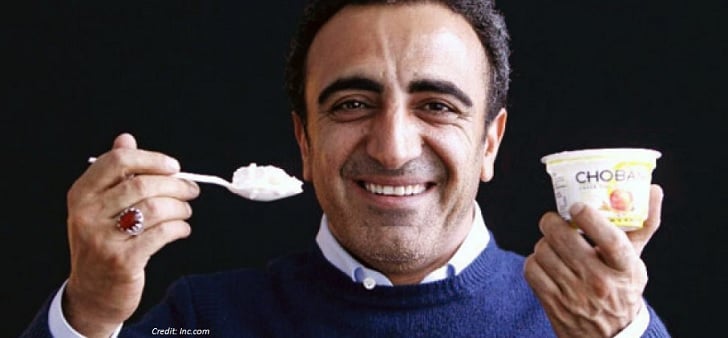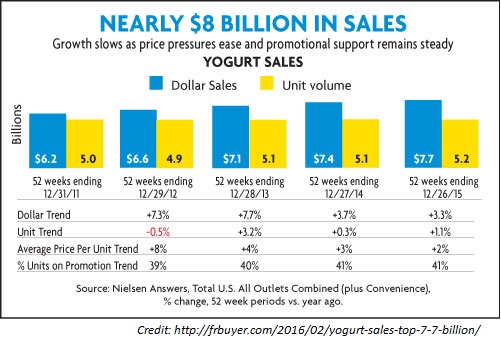In 2007, Hamdi Ulukaya purchased an old factory in a small New York town and got to work creating a Greek yogurt for the masses. Along the way, he helped revive a local economy, created an entirely new category in the competitive food industry, and created something healthy that Americans love. Within five years, the company was doing $1 billion in annual revenue.

Chobani’s story is a great one. But as former Chief Communications Officer Nicki Briggs will tell you, a great brand doesn’t develop overnight. An exceptional product and brand strategy can take years to nurture and develop, though keen focus on a message can expedite the process.
Scaling to a billion dollars in less than a decade requires, among many things, near-perfect execution in branding, marketing and PR. Luckily for Chobani, Nicki approached branding with a mind for scale from day one. She wanted a strategy they could leverage immediately, but also evolve with the business.
“PR’s a bit of a snowball,” she explained to me. “It’s about taking the brand values and crafting a tight message. As you build momentum, the message snowballs, but the core message always stays the same.”
Every company has a story. Not every company’s story is bound for the New York Times, and whether a company chooses to harness its story for the good of the greater business is a matter of choice. But, Nicki’s experience at Chobani, and now at her marketing and brand communications firm NEAR BOIL, serves as a template for young food and beverage companies looking to scale their brand’s impact.
Scaling Requires the Right Product and the Right People
Chobani solved a problem the consumer wasn’t even aware of. Greek yogurt existed in niche health stores, but it didn’t taste good enough for most people to care about it. When Chobani hit the market, people were excited about Greek yogurt for the first time. The company was well-positioned for growth.
Product, check.

Ulukaya’s personal story got customers excited about the brand. He immigrated to the United States in 1994, and with no prior experience, built a billion-dollar brand. He’s also been an advocate for increasing minimum wage, and made headlines when he gave 10% of the company to employees in 2015. That move turned a few early employees into overnight millionaires.
People, check.
With the two most important pieces in place, Chobani PR had a lot of great material to work with. Still, execution is key. Nicki knew that a truly cohesive message must be agreed upon and embraced internally first. Companies that live their brand identity every day are the ones that can sustain positive sentiment for the long term.
So she led an effort to define the company’s values. She helped survey more than 1,000 employees, created internal brand ambassadors and put teams in place to ensure the company lived up to its high standards.
“It captured something that was really magical,” she explained. “It was the tangible energy of our company.”
Syncing the product with the people behind it created plenty of opportunities for press. The media in New York told story after story of the resurgence of the local economy. The New York Times, Wall Street Journal, Bloomberg, NPR and Forbes were eager to talk about the company’s explosive growth. Inc reported on its hiring practices. When Chobani opened a new factory in Idaho, local media were thrilled to report on all the new jobs, high wages and employee benefits.
Chobani’s PR showcased its authenticity from the inside out.
Make the Brand Smaller
Small brands often want to appear larger than they are. The phrase “make the brand bigger” is an all too familiar cliche amongst marketers of emerging businesses. But, more and more, large brands now want to appear smaller than they are. It’s a catch-22 that can lead to mixed messaging and a lack of authenticity.
The Greek yogurt market barely existed when Ulukaya launched the company in 2007. But in 2013, Greek yogurt accounted for $2.6 billion in total sales. Fast growth pulls companies towards a corporate mentality, but people love a good underdog.

So how do you go about being a large company with small company values? According to Nicki, there are two key ways.
1. Take risks
The larger a company gets, the more risk-averse they are. This is the classic innovator’s dilemma—how do you serve the customer’s current needs while still preparing for the future?
Nicki recommends building risk taking into your branding strategy. Whether it’s the latest social channels, podcast sponsorships, outbound PR campaigns or just good old-fashioned ads, she says that “to differentiate your brand, you just have to take risks.”
Be prepared for some of your plans to fail. Implicit in trying new branding strategies is the notion that some will not work. This is part of the process, Nicki says. “The saving grace is that you can be empowered to take risks when you start with strategy.”
2. Never stop evolving
This goes back to the snowball analogy. Chobani earned its exciting underdog status by creating a new category of yogurt, but luckily for the communications team, the leadership was committed to evolving the brand as it scaled. It’s kept that underdog mentality by challenging the status quo on wages and benefits and a focus on local sourcing. And all of it is neatly tied together on the company website and social channels. The messages is remarkably consistent in the press.
An obsession with tinkering is what keeps your branding fresh. The key to sustainable PR is near-constant change.

Learn from Your Competition
Innovation in the food and beverage industry is highly celebrated, but creates new marketing challenges. Many founders assume that the novelty of their product alone sets them apart. But as Nicki learned with Chobani, every product has competitors. Tasty Greek yogurt was a new product, but it still competed with other healthy snacks. Perhaps most importantly, it competes with apathy.
“Sometimes I’ll hear from a founder that they don’t have competitors,” she says. “They aren’t trying to be boastful, they just believe deeply in the uniqueness of their product, so they do not see other direct product parallels in their industry.”
But competition is everywhere. It’s better, in Nicki’s estimation, to embrace it rather than ignore it. “It’s critical to success. Being a company that says, ‘Oh, we don’t have any competitors,’ is like having blinders on. You can’t stay afloat if you can’t keep up with the market and what consumers are responding to.”
In addition to product competition, you’re also up against other branding strategies. Studying your competitors’ branding is one of the best ways to improve your own.
A general rule of thumb is to follow the MAYA (Most Advanced Yet Acceptable) principle. It states that the public won’t accept logical solutions if they are “too vast a departure from what they have been conditioned into accepting as the norm.”
Imagine you and your competitors exist on a branding spectrum, ranging from dull to exciting. Your brand should be different, but not bizarre. If you want mass appeal, you’ll need to fall within the comfort zone of most consumers while still piquing their interest.
Nicki suggests identifying your core competitors, prioritizing them, then examining what they do well vs. just what they do poorly. Their successes can point you in the right direction and their failures can help you avoid similar pitfalls.
“A little competition never hurts,” she says. “It’s always nice to have some healthy adrenaline to make sure that you’re maximizing every opportunity.”
A version of this article originally appeared in Inc Magazine
